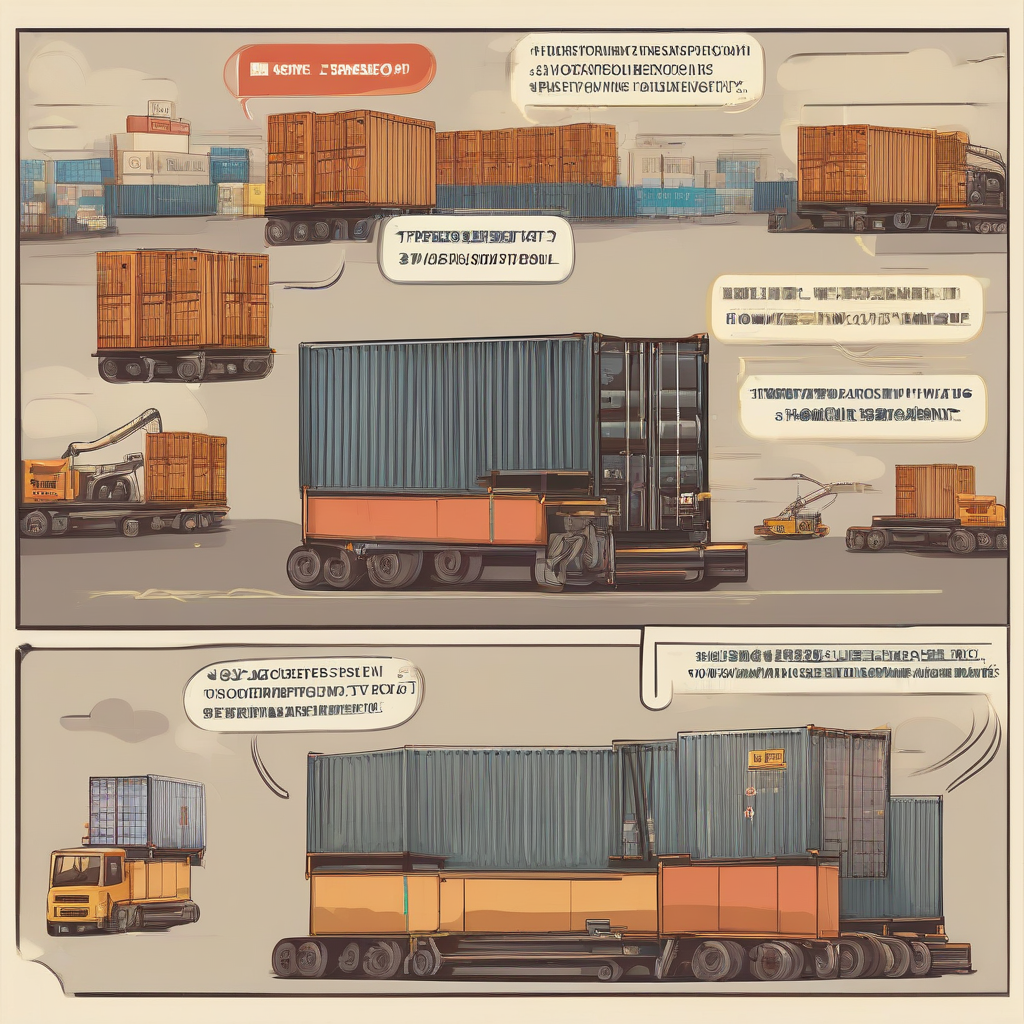Revolutionizing Logistics: A Deep Dive into the Transportation and Warehousing Industry
The transportation and warehousing industry forms the backbone of global commerce, facilitating the seamless movement and storage of goods from origin to consumer. Its complexity, however, is often underestimated. This exploration delves into the intricate workings of this vital sector, examining its key components, current trends, and future prospects.
The Core Components of Transportation and Warehousing
The industry can be broadly categorized into two interconnected sectors: transportation and warehousing. These sectors are deeply intertwined, with the efficiency of one directly impacting the other.
Transportation
- Road Transportation: This remains the dominant mode, encompassing trucking, delivery services, and courier networks. Its flexibility and accessibility make it crucial for last-mile delivery and shorter hauls.
- Rail Transportation: Ideal for long-distance, high-volume freight, rail offers cost-effectiveness and environmental advantages compared to road transport. However, infrastructure limitations and speed constraints can be drawbacks.
- Air Transportation: The fastest mode, air freight is indispensable for time-sensitive goods and international shipments. Its high cost, however, limits its applicability to high-value or perishable items.
- Sea Transportation: Cost-effective for large-scale, international movements, sea freight is crucial for global trade. However, transit times are significantly longer, and susceptibility to weather conditions is a major factor.
- Intermodal Transportation: This involves combining multiple modes of transport (e.g., rail and road) to optimize efficiency and cost. It’s becoming increasingly prevalent due to its versatility and capacity to leverage the strengths of each mode.
Warehousing
- Storage: The core function, encompassing the safe and secure storage of goods in various environments (climate-controlled, ambient, etc.). Effective storage requires optimized space utilization and inventory management.
- Order Fulfillment: Warehouses act as strategic hubs for order processing and fulfillment. Efficient picking, packing, and shipping processes are critical for timely delivery.
- Inventory Management: This involves tracking and managing inventory levels to optimize stock levels, minimize waste, and prevent stockouts. Sophisticated inventory management systems are crucial for efficient warehouse operations.
- Value-Added Services: Many warehouses offer additional services like kitting, labeling, packaging, and light assembly, enhancing the value proposition for clients.
- Distribution: Warehouses serve as strategic distribution points, facilitating the efficient movement of goods to retail locations, consumers, or other businesses.
Current Trends Shaping the Industry
The transportation and warehousing industry is undergoing a period of rapid transformation, driven by technological advancements, evolving consumer expectations, and global economic shifts.
Technological Advancements
- Automation and Robotics: Automated guided vehicles (AGVs), robotic arms, and automated storage and retrieval systems (AS/RS) are increasing efficiency and productivity in warehouses.
- Internet of Things (IoT): Real-time tracking of goods, predictive maintenance of equipment, and improved supply chain visibility are enabled by IoT technologies.
- Artificial Intelligence (AI): AI-powered systems optimize routing, predict demand, improve inventory management, and automate various warehouse processes.
- Big Data Analytics: Analyzing large datasets allows businesses to make data-driven decisions, improving forecasting, optimizing routes, and enhancing customer service.
- Blockchain Technology: Enhancing supply chain transparency and security by providing immutable records of goods’ movement and provenance.
Evolving Consumer Expectations
- Faster Delivery Times: Consumers expect faster and more convenient delivery options, including same-day and next-day delivery.
- Increased Transparency: Consumers demand greater visibility into the status of their orders and the location of their goods.
- Personalized Experiences: Tailored delivery options and customized packaging are becoming increasingly important.
- Sustainable Practices: Consumers are increasingly concerned about the environmental impact of transportation and warehousing, leading to demand for sustainable practices.
Global Economic Shifts
- Globalization: The increasing interconnectedness of global markets drives the need for efficient and reliable transportation and warehousing solutions.
- E-commerce Boom: The rapid growth of e-commerce has dramatically increased demand for transportation and warehousing services.
- Supply Chain Disruptions: Global events, such as pandemics and geopolitical instability, highlight the vulnerability of global supply chains and the need for resilience.
- Labor Shortages: The industry faces challenges related to labor shortages, prompting the adoption of automation and other solutions to address this issue.
Challenges Facing the Industry
Despite its growth and technological advancements, the transportation and warehousing industry faces significant challenges.
- Driver Shortages: A critical issue, impacting the capacity and efficiency of road transportation.
- Infrastructure Limitations: Outdated infrastructure in many regions limits the capacity and efficiency of transportation networks.
- Rising Fuel Costs: Fluctuations in fuel prices directly impact the cost of transportation and logistics.
- Regulations and Compliance: Navigating complex regulations related to safety, security, and environmental protection presents significant challenges.
- Cybersecurity Threats: The increasing reliance on technology makes the industry vulnerable to cybersecurity breaches.
- Sustainability Concerns: The industry’s environmental impact necessitates the adoption of more sustainable practices.
The Future of Transportation and Warehousing
The future of the industry will be shaped by continued technological advancements, a focus on sustainability, and a drive for greater efficiency and resilience.
- Autonomous Vehicles: Self-driving trucks and delivery robots have the potential to revolutionize transportation, improving efficiency and reducing costs.
- Drone Delivery: Drones are increasingly being used for last-mile delivery, particularly in remote or urban areas.
- Hyperautomation: The integration of multiple automation technologies to create highly efficient and flexible warehouse operations.
- Sustainable Logistics: The industry is increasingly adopting sustainable practices, including the use of alternative fuels, electric vehicles, and eco-friendly packaging.
- Data-Driven Decision Making: The use of data analytics to optimize operations, predict disruptions, and improve decision-making throughout the supply chain.
- Increased Collaboration: Collaboration across the supply chain, from manufacturers to retailers, is crucial for building resilient and efficient networks.
